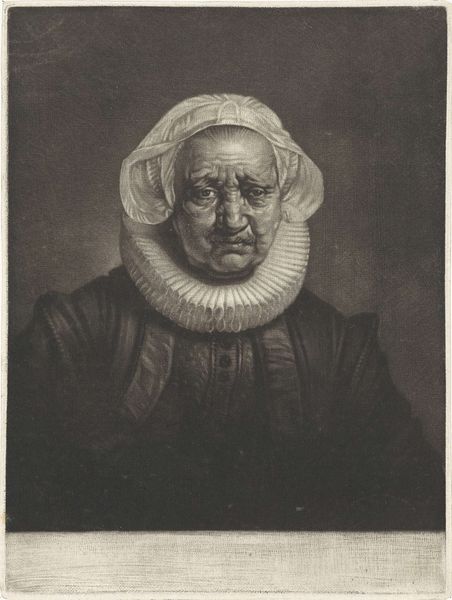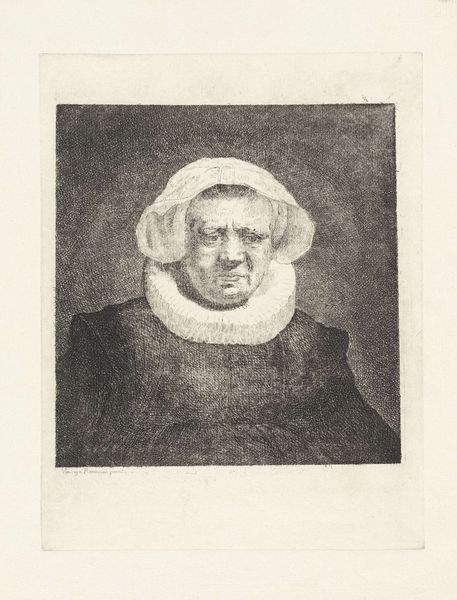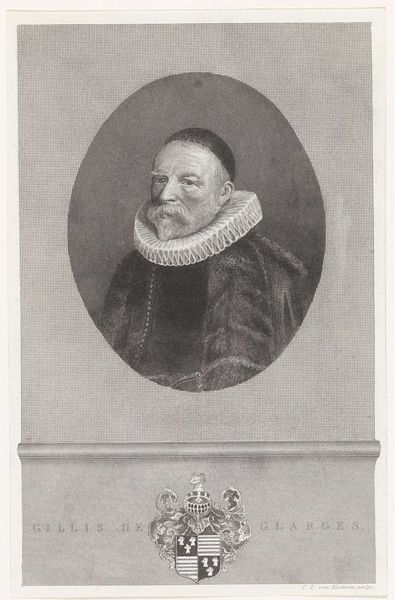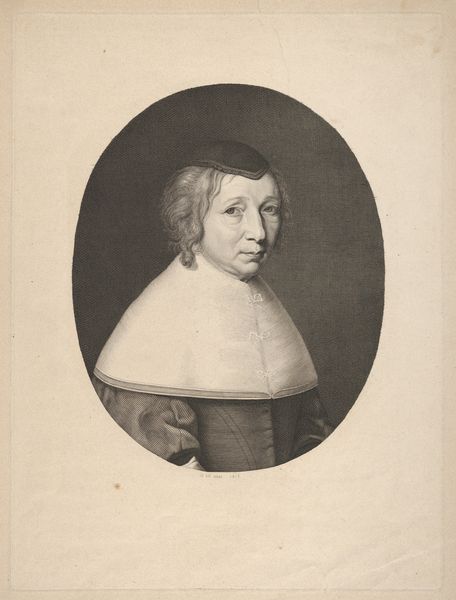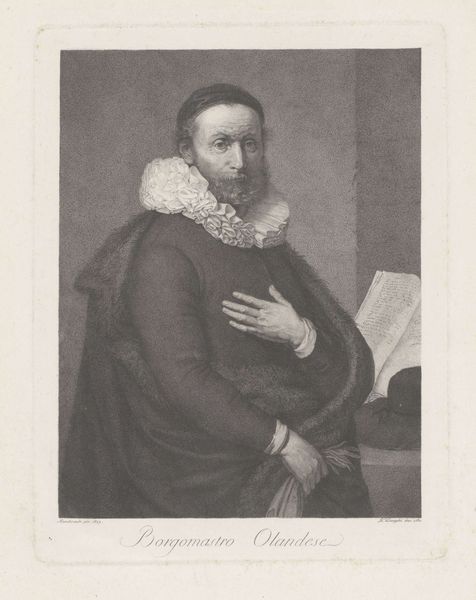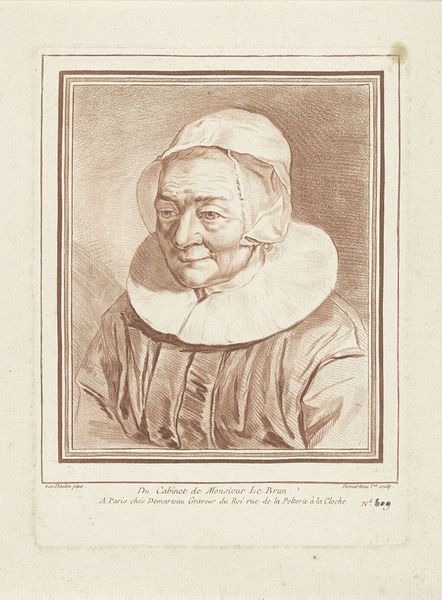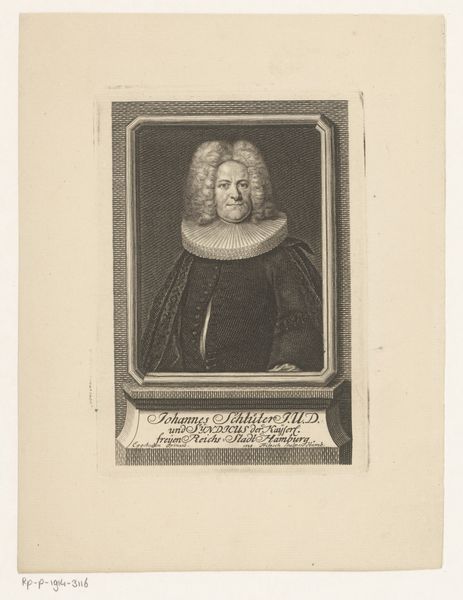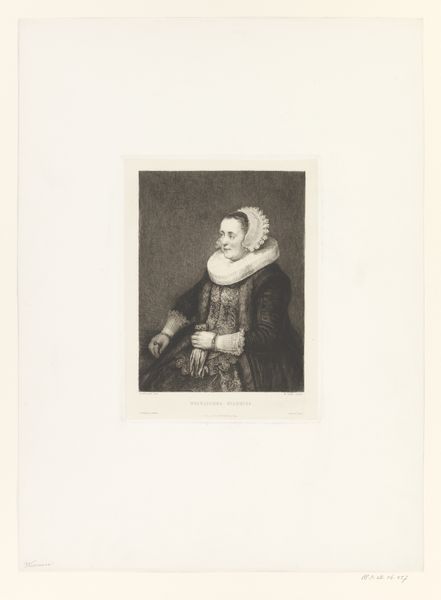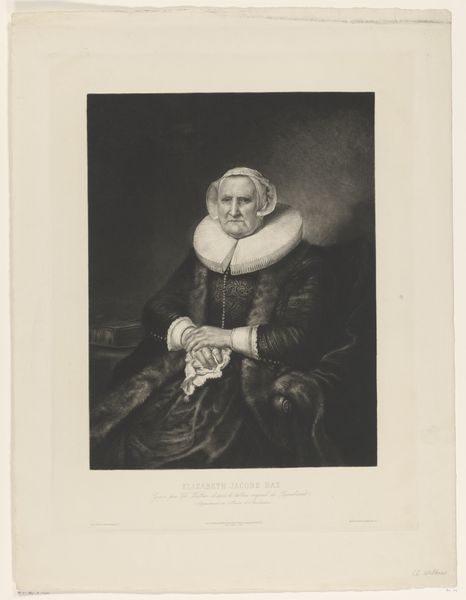
print, engraving
#
portrait
#
neoclacissism
# print
#
historical photography
#
academic-art
#
engraving
Dimensions: height 403 mm, width 284 mm
Copyright: Rijks Museum: Open Domain
Editor: This is "Portrait of Aechje Claesdr." created around 1814 by Charles Howard Hodges, currently residing in the Rijksmuseum. It’s an engraving, so a print. I find it so...stark. There's something about her direct gaze. What do you make of this piece? Curator: Ah, yes, Aechje. When I look at her, I see the weight of generations. Hodges captures more than just a likeness; he hints at the woman's inner world. Imagine the stories etched into those lines! It’s like she’s daring you to look away, isn't it? Tell me, what's your first impression beyond that initial starkness? Does the costume reveal anything? Editor: I guess her attire signals some kind of status or perhaps religious affiliation? Curator: Precisely! The stark black clothing, the elaborate yet austere cap, and the ruff all speak to her position. Notice how Hodges uses light and shadow to sculpt her face, adding depth and dimension. Think about it: this was a period obsessed with capturing reality with Neoclassical ideals. Don't you find it incredible how Hodges managed to capture the unique individual despite adhering to convention? Editor: Definitely. You notice the fine lines around her eyes and mouth which gives you that insight into her, something more personal. Curator: And that's the magic, isn't it? It makes me think about identity through generations, how artists see us and we want to be seen. The piece starts as just a portrait and becomes a question mark hovering above the meaning of personhood. Editor: It's a different kind of portrait than I was expecting, honestly. But it makes you want to know her! Curator: Exactly. That directness, the humanity captured in ink—that’s what lingers with me. Thanks for pointing out the "starkness"–it's actually that quiet confidence that stays with you.
Comments
No comments
Be the first to comment and join the conversation on the ultimate creative platform.

